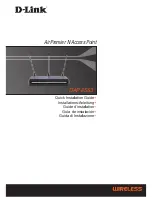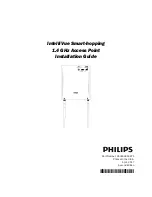
High-Power Ceiling Mount Wireless 300N PoE Access Point
50
o
Avoid wireless repeater setups:
Repeating a wireless signal in order to increase the range of your wireless network
without running a single network cable, that sounds like a great idea. It’s relatively easy
to set up, and it requires no additional cables to be run.
The primary disadvantage of a wireless repeater setup is that it effectively cuts the
bandwidth in half for any computer that is connected to it. The reason for this is that the
repeater receives the signal, processes the signal, and that takes time, and then
rebroadcasts the signal – and does this in both directions, from the router to the
computer and from the computer to the router.
Other disadvantages:
Compatibility problems between different devices from different vendors using
different chipsets
If the repeater is connected too far away from the access point, the AP Wi‐Fi
signal has already degraded too much, and even if the re‐broadcasted signal
appears strong for the wireless client that connects to the repeater, the
seemingly great connection quality can yield results that are sub optimal.
Not good enough for serious gamers – wireless repeater setups can introduce
additional packet loss to the wireless connection. While wireless connections by
nature as not as robust as wired connections, connecting via a wireless repeater
can compound the problem.
What are the alternatives:
If you need to cover an area that is too large for one access point alone and you want to
maximize the stability and performance of your wireless network, and then the following
setup is going to yield the best results:
Each access point is connected to the wired backbone, and each access point is set up in
access point mode.
















































